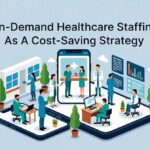Patient engagement in healthcare refers to a fundamental movement in the direction of patient-centered treatment, lowering healthcare costs, and improving patient satisfaction and health outcomes. For patients to have a positive attitude toward it, it is necessary to comprehend the benefits. We will briefly discuss patient engagement in this article along with its advantages.
What Is Patient Engagement?
Patient engagement in healthcare describes the method by which patients actively participate in the administration of their own health and medical treatment. Effective healthcare patient engagement is defined as a collaboration between patients and healthcare professionals in which patients are equipped with knowledge, tools, and support to play an active role in their healthcare.
Software for telehealth is frequently used to guarantee successful patient engagement. You can click here now to learn more about these telehealth software options. This software can even be used for wearables or come in the form of mobile apps.
The Advantages of Patient Engagement in Healthcare
The benefits of patient engagement in healthcare are numerous. Here are some defining patient engagement examples.
Impact on health outcomes
Engaged patients follow their treatment regimens. This adherence is critical for avoiding problems and hospitalizations. Additionally, patient engagement in healthcare fosters higher levels of patient health knowledge. Through enhanced self-management and proactive health practices, patients with this literacy are able to make well-informed decisions regarding their care.
Enhanced patient satisfaction
Patient engagement in healthcare improves patient satisfaction. This satisfaction is influenced by patient engagement, which promotes empowerment via knowledge and education. Furthermore, patient satisfaction is increased by having access to shared decision-making, better communication, and individualized care plans. Enhanced patient satisfaction is one of the answers to the question, “Why is patient engagement important?”
Effective chronic disease management resulting from patient engagement in healthcare
Patient engagement examples can be illustrated in the case of chronic disease management. Patients have certain duties when managing this type of disease. These duties include setting goals, tracking progress, telemedicine and remote consulting, prescription management, self-monitoring, and support for lifestyle modifications. These all serve as examples of how patients are involved in their healthcare. This engagement benefits patients as well as healthcare providers by ensuring that any chronic disease is effectively managed.
Early detection and preventative treatment
Patient engagement in healthcare allows for rapid detection of any irregularities, promoting early medical action and preventative therapy. The empowerment that comes from training and education fuels this. Patients can therefore take preventative action to keep their health intact. Patients who participate actively in their care also schedule appointments and attend regular checkups. This routine observation helps to preserve health and delay the onset of illness.
Conclusion
The concept of patient engagement in healthcare and its benefits have been examined in this article. Notwithstanding the enticing advantages for healthcare providers, there exist certain obstacles and difficulties. These obstacles include linguistic and cultural disparities, technical difficulties, and pushback from healthcare providers. The entire potential of patient engagement in revolutionizing healthcare delivery can be realized by tackling these issues comprehensively.
Did you find this helpful? Check out our other helpful articles on our website.
Read Also
- Creative Approaches to Alleviating Healthcare Staff ShortagesHospitals and clinics are facing staff shortages, which makes it harder to take care of patients well. Finding simple and useful solutions is very important. Easy changes like flexible work hours, good training, and chances to grow can help staff stay happy. Technology, like online doctor visits and helpful tools, can make work easier. Smart… Read more: Creative Approaches to Alleviating Healthcare Staff Shortages
- Understanding the Role of Sterilizers in Healthcare FacilitiesHave you ever wondered how hospitals keep their equipment safe enough to use on dozens of patients every day? Most people never think about what happens behind the scenes, yet these hidden steps play a huge role in patient safety. Sterilizers are part of that system, working quietly to remove harmful germs before any instrument… Read more: Understanding the Role of Sterilizers in Healthcare Facilities
- Building Healthcare Access Where It’s Needed Most: A Local First ApproachHealthcare shouldn’t depend on where you live. But in the U.S., it often does. If you’re in a big city, you likely have options. If you’re in a small town or an underserved neighbourhood, it’s a different story. To fix this, more healthcare leaders are turning to a local-first approach. That means putting clinics and… Read more: Building Healthcare Access Where It’s Needed Most: A Local First Approach
- Revolutionizing Patient Engagement: Innovative Solutions for Improved Care and Treatment SuccessNavigating healthcare system can often feel overwhelming for patients. Between appointments, prescriptions, and treatment regimens, it’s easy for crucial details to get lost in the shuffle. That’s why effective patient engagement and support solutions are more important than ever. Companies like Serva Health, with their pharma hub services, are stepping up to ensure that patients… Read more: Revolutionizing Patient Engagement: Innovative Solutions for Improved Care and Treatment Success
- On-Demand Healthcare Staffing As A Cost-Saving StrategyThis is an exciting and challenging time for the healthcare industry. Technology is advancing almost faster than humans can keep pace. New legislation is creating fresh challenges for the future of healthcare, and the shifting population demographic continues to place more pressure on healthcare facilities. Amidst these changes, healthcare facilities are facing a critical staffing… Read more: On-Demand Healthcare Staffing As A Cost-Saving Strategy
- The Benefits of Contract Labor Staffing in HealthcareThe most successful healthcare facilities today aren’t just reacting to crises—they are building workforce resilience to withstand them. Unpredictable patient demand, coupled with persistent nursing shortages, has made the traditional staffing model obsolete. Relying on mandatory overtime to cover a sudden surge in capacity is a recipe for high turnover and rising employee burnout relief… Read more: The Benefits of Contract Labor Staffing in Healthcare
- Management Reinforcement for Healthcare Providers in a Shifting SystemHealthcare is changing faster than ever. So, providers are feeling the pressure to keep up. New technology, changing patient needs, and constant rule updates make it tough for managers to stay on top. Strong leadership helps teams work better, give great care, and stay happy in their jobs. Here’s how healthcare leaders can strengthen their… Read more: Management Reinforcement for Healthcare Providers in a Shifting System
- Why Effective Disinfection Remains the Foundation of Public HealthFrom hospitals and schools to transport hubs and food production sites, disinfection is central to breaking the chain of infection and protecting community health. The COVID-19 pandemic highlighted how crucial surface hygiene and environmental control are in reducing the spread of harmful microorganisms. Yet, beyond emergency response, routine and validated disinfection practices remain the cornerstone… Read more: Why Effective Disinfection Remains the Foundation of Public Health









